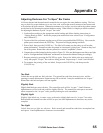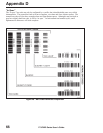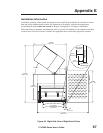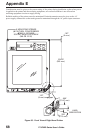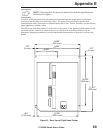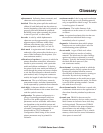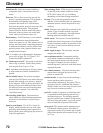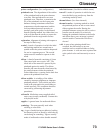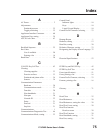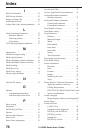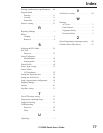
fanfold media Media that comes folded in a
rectangular stack. Contrast this with roll
media.
firmware This is the term used to specify the
printer’s operating program. This program is
downloaded to the printer from a host
computer and stored in FLASH memory.
Each time the printer power is turned on, this
operating program starts. This program
controls when to feed the media forward or
backward, when to print a dot on the label
stock, when to activate the cutter, etc.
flash memory FLASH memory is non-volatile
and will maintain the stored information
intact when power is off. This memory area is
used to store the printer’s operating program.
In addition this memory can be used to store
optional printer fonts, graphic formats, and
complete label formats.
font A complete set of alphanumeric characters
in one style of type. Ex: CG Times,CG
Triumvirate Bold Condensed.
ips “inches-per-second” The speed at which the
label or tag is printed. Zebra offers printers
that can print from 2 ips to 12 ips.
label An adhesive-backed piece of paper, plastic,
or other material on which information is
printed.
label available sensor For printers equipped
with the Peel-Off Option, this sensor detects a
printed label waiting to be taken or “picked”
by the operator. While it detects this label, the
printer will not print additional labels. Once
the label has been removed from the printer,
the next label is printed. Also called the
“take-label sensor”.
label backing (label liner) The material on
which labels are affixed during manufacture
and which is discarded or recycled by the
end-users.
liquid crystal display The LCD is a back-lit
display which provides the user with either
operating status during normal operation or
option menus when configuring the printer to
a specific application.
light emitting diode LEDs are used as indicators
of specific printer status conditions. Each
LED will be either off, on, or blinking
depending on the feature being monitored.
lock-up This is the term generally used to
describe a fault condition that, for apparently
unknown reasons, causes the printer to stop
working.
media Material onto which data is printed by the
printer. Types of media include: tag-stock,
die-cut labels, continuous (with and without
backing material), fanfold, and roll.
media sensor This sensor is located behind the
printhead to detect the presence of media and,
for non-continuous media, the position of the
web, hole, or notch used to indicate the start
of each label.
media supply hanger The stationary arm that
supports the media roll.
non-continuous media Consumable printing
stock which contains an indication of where
one label/printed format ends and the next
one begins. Examples are die-cut labels,
notched tag-stock, and stock with black mark
registration marks
non-volatile memory Electronic memory that
retains data even when the power to the
printer is turned OFF.
notched media A type of tag stock containing a
cutout area that can be sensed as a
start-of-label indicator by the printer. This is
typically a heavier, cardboard-like material
which is either cut or torn away from the next
tag. (See non-continuous media.)
peel-off A mode of operation in which the label
is separated from the backing material by a
mechanical process. The backing material
may be rewound onto a spindle or allowed to
fall freely from the printer. A peel-off option
must be installed to operate in this mode.
print speed The speed at which printing occurs.
For thermal transfer printers, this speed is
expressed in terms of ips (inches per second).
Zebra offers printers that can print from 2 ips
to 12 ips.
72 170PAX2-Series User’s Guide
Glossary




